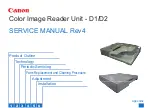
2. SUPPLY SPECIFICATIONS
EO10-33016A
(Revision Date: Feb. 14, 2008)
2.4 Specification of RFID Tag
2- 7
2.4 Specification of RFID Tag
2.4.1 General Description
The RFID supplies are RFID tag (wireless IC tag) inlays designed to be converted into tag and label
applications. Printers, which are equipped with an RFID kit, can print data on the surface of RFID tags
as well as write data on them.
The B-SA4T series optional RFID kit, B-SA704-RFID-U2-EU-R, is destined for Europe and operates in
the UHF band 869.7MHz to 870.0MHz (
Center Frequency
: 869.85MHz).
NOTE: Regarding the specification of RFID supplies and the ribbon used for printing on them, refer to
Section 2.1 MEDIA and Section 2.2 RIBBON.
2.4.2 Available RFID Tag
The B-9704-RFID-U2-EU-R supports EPC C1 Gen2 tags.
2.4.3 Location of RFID Tag
The location of an RFID tag in a label influences on the accuracy of writing data on the RFID tag. It is
impossible to define the one best location for every RFID tag in labels because the best location depends
on the type of RFID tag and RFID tag antenna.
The RFID Analyze Tool (7FM001113) can evaluate the accuracy of writing data on the RFID tag. For the
usage of this tool, refer to the RFID Analyze Tool Operation Specification (TAA-2195).
As a guideline, the best location for some common RFID tags is given below.
It is recommended to use the RFID Analyze Tool to evaluate the accuracy of writing data on an RFID tag to
be used, then determine a specific location of the RFID tag.
If the RFID tag cannot be placed on the best location specified, perform a forward/reverse feed before a
data write using the RFID Tag Position Adjustment Command ([ESC]@003).
However, the label bottom edge may be stuck on the print head edge during a reverse feed from the print
start position, resulting in a feed jam. Therefore, a location where no reverse feed is required is the ideal
location.
Note that the best location described in this specification may not be applicable depending on the type or
paper or glue even if the same RFID tags are used. This guideline applies to RFID labels for thermal
transfer issue. When using the media made of PET or thermal paper, the best location needs to be found
again.
















































